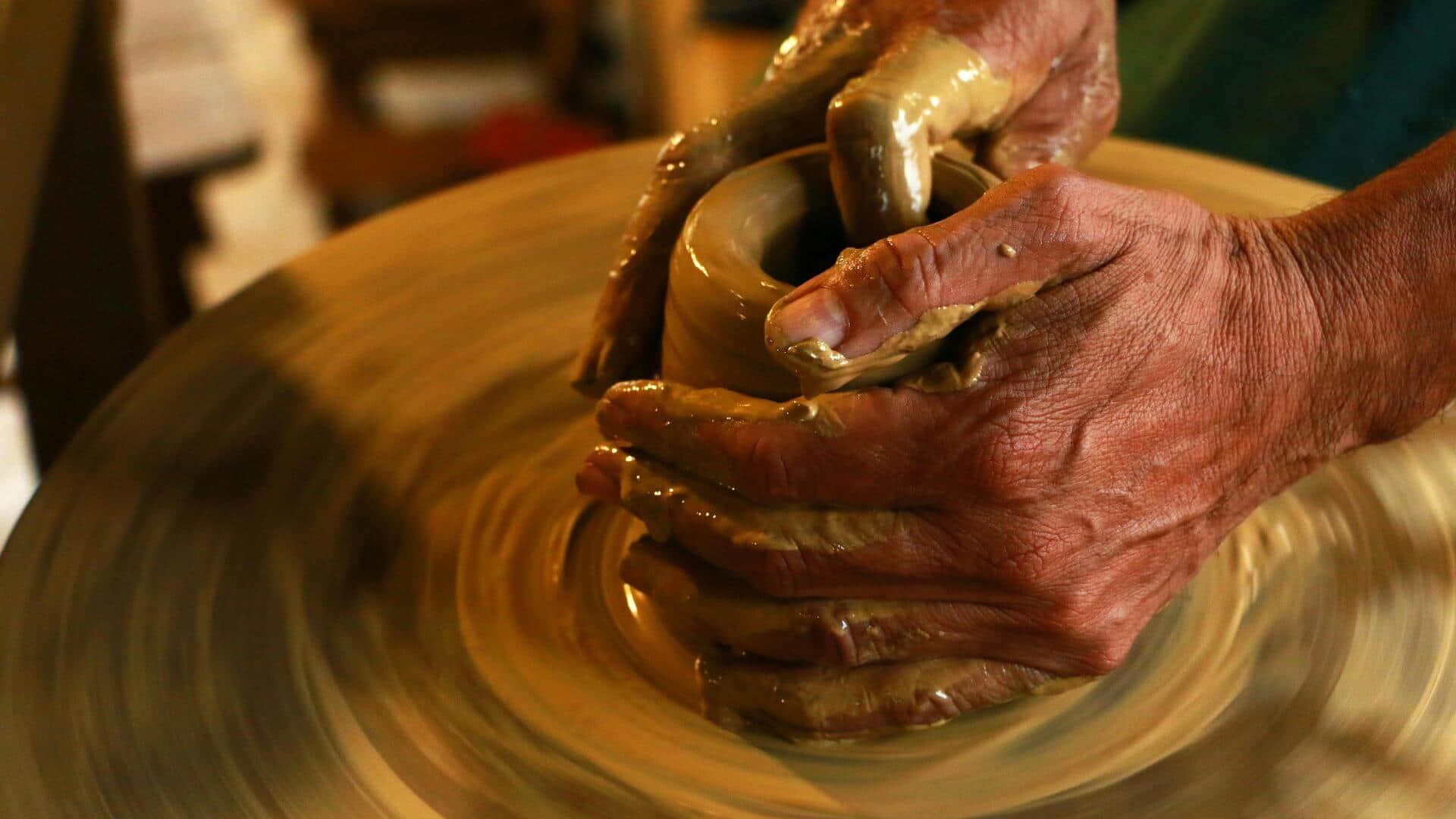
How African artisans keep ancient pottery alive today
What's the story
African pottery is a rich tradition that has been passed down through generations. The techniques used by ancient artisans are still practiced today, reflecting the cultural heritage and artistic expression of various African communities. From hand-coiling to unique firing methods, these techniques have stood the test of time, showcasing the ingenuity and creativity of African potters. Here are five ancient African pottery techniques still in use today.
#1
Hand-coiling technique
The hand-coiling technique is one of the oldest methods of pottery making in Africa. It involves rolling clay into long strips and stacking them to form the desired shape. This method allows artisans to create intricate designs and large vessels without the use of molds. Hand-coiling is widely used in many African regions, allowing potters to craft functional and decorative pieces with ease.
#2
Pinch pot method
The pinch pot method involves shaping clay by pinching it between fingers to form small bowls or containers. This technique is simple yet effective, allowing for precise control over the form and thickness of the pottery. The pinch pot method is commonly used for making small items such as cups or decorative objects, showcasing the skillful touch of the artisan.
#3
Slab construction technique
Slab construction involves rolling out flat pieces of clay that are then joined together to create various shapes and sizes. This technique allows for greater versatility in design compared to other methods like hand-coiling or pinch pots. Slab construction is often employed in making larger structures or complex forms that require more than just basic shaping techniques.
#4
Burnishing process
Burnishing is a finishing technique where polished stones are rubbed over leather-hard clay surfaces to create a smooth, shiny finish without glaze. This process enhances texture visibility while making surfaces more water-resistant than unburnished ones. It adds aesthetic value without altering original clay properties significantly during firing stages.
#5
Natural dye application
Natural dyes from plants, minerals, and other organic materials are used to color pottery in Africa. These dyes are eco-friendly and sustainable, making them ideal for traditional artisans who want to keep their production methods as natural as possible. The colors produced are vibrant and long-lasting, adding to the beauty of the pieces without compromising the integrity of the clay used in the making.